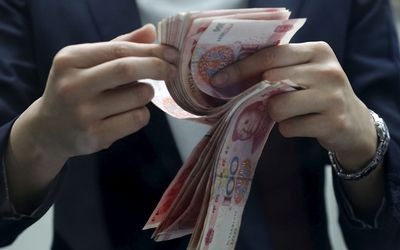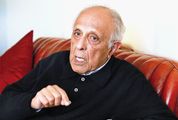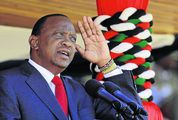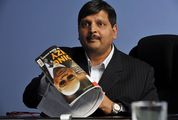China sought Fed help when market crashed
by Jason Lange,
2016-03-22 07:28:16.0
WASHINGTON — Confronted with a plunge in its stock markets last year, China’s central bank reached out swiftly to the US Federal Reserve, asking it to share its play book for dealing with Wall Street’s "Black Monday" crash of 1987.
The request came in a July 27 e-mail from a People’s Bank of China (PBOC) official with a subject line: "Your urgent assistance is greatly appreciated!"
In a message to a senior Fed staffer, the PBOC’s New York-based chief representative for the Americas, Song Xiangyan, pointed to the day’s 8.5% drop in Chinese stocks and said "my governor would like to draw from your good experience".
It is not known whether the PBOC had contacted the Fed to deal with previous incidents of turmoil. The Chinese central bank and the Fed had no comment when reached by Reuters.
In a Reuters analysis last year, Fed insiders, former Fed employees and economists said that there was no official hotline between the PBOC and the Fed and that the Chinese were often reluctant to engage at international meetings.
The Chinese market crash triggered steep declines across global financial markets and within a few hours, the Fed sent China’s central bank a trove of publicly available documents, detailing the US central bank’s actions in 1987.
Fed policy makers started a two-day policy meeting the next day and took note of China’s stock sell-off, according the meeting’s minutes.
Several said a Chinese economic slowdown could weigh on the US.
Financial market contagion from China was one of the reasons cited by the Fed in September when it put off a rate hike that many analysts had expected, a sign of how important China has become both as an industrial powerhouse and financial market.
The messages, which Reuters obtained through a Freedom of Information Act request, show how alarmed Beijing has become over the deepening financial turmoil and offer a rare insight into one of the least understood major central banks.
The exchanges also show that while the two central banks have a collegial relationship, they might not share secrets even during a crisis.
"Could you please inform us ASAP about the major measures you took at the time," Mr Song asked the director of the Fed’s International Finance Division, Steven Kamin, in the July 27 e-mail. The message registered in Mr Kamin’s account just after 11am.
In Washington, Mr Kamin quickly replied from his Blackberry: "We’ll try to get you something soon."
What followed five hours later, was a 259-word summary of how the Fed worked to calm markets and prevent a recession after the S&P 500 stock index tumbled 20% on October 19 1987. Mr Kamin also sent notes to guide PBOC officials through the many dozens of pages of Fed transcripts, statements and reports that were attached to the e-mail.
All of the attached documents had long been available on the Fed’s website and it is unclear if they played a role in shaping Beijing’s actions.
Mr Kamin’s documents detail how the Fed began issuing statements the day after the market crash, known as Black Monday, pledging to supply markets with cash so they could function.
By the time Mr Song wrote to Mr Kamin, China had spent a month fighting a market slide and many of the actions taken by the PBOC and other Chinese authorities shared the contours of the Fed’s 1987 game plan.
The July 27 plunge in the Shanghai Composite index was the biggest one-day fall since 2007 and by then, the market had lost nearly a third of its value over six weeks.
China’s central bank had already cut interest rates on June 27 in similar fashion to the Fed’s swift move to ease short-term rates in 1987.
Mr Song told Mr Kamin the PBOC was particularly interested in the details of the Fed’s use of repurchase agreements temporarily to inject cash into the US banking system in 1987.
The PBOC had increased cash injections in June and ramped up repurchase agreements in August as stocks continued to slide. The PBOC also eased policy on August 11 by allowing a 2% devaluation in the yuan currency. As Mr Song and Mr Kamin exchanged messages, other Chinese authorities were trying to contain the crash.
China’s Vice-Finance Minister Zhu Guangyao said last year Chinese supervisers needed to learn from countries such as the US. Premier Li Keqiang said last month China’s regulators did not respond sufficiently, but China had fended off systemic risks.
Reuters

A clerk counts 100-yuan banknotes. The Chinese market crash last year triggered steep declines across global markets. Picture: REUTERS/KIM KYUNG-HOON
WASHINGTON — Confronted with a plunge in its stock markets last year, China’s central bank reached out swiftly to the US Federal Reserve, asking it to share its play book for dealing with Wall Street’s "Black Monday" crash of 1987.
The request came in a July 27 e-mail from a People’s Bank of China (PBOC) official with a subject line: "Your urgent assistance is greatly appreciated!"
In a message to a senior Fed staffer, the PBOC’s New York-based chief representative for the Americas, Song Xiangyan, pointed to the day’s 8.5% drop in Chinese stocks and said "my governor would like to draw from your good experience".
It is not known whether the PBOC had contacted the Fed to deal with previous incidents of turmoil. The Chinese central bank and the Fed had no comment when reached by Reuters.
In a Reuters analysis last year, Fed insiders, former Fed employees and economists said that there was no official hotline between the PBOC and the Fed and that the Chinese were often reluctant to engage at international meetings.
The Chinese market crash triggered steep declines across global financial markets and within a few hours, the Fed sent China’s central bank a trove of publicly available documents, detailing the US central bank’s actions in 1987.
Fed policy makers started a two-day policy meeting the next day and took note of China’s stock sell-off, according the meeting’s minutes.
Several said a Chinese economic slowdown could weigh on the US.
Financial market contagion from China was one of the reasons cited by the Fed in September when it put off a rate hike that many analysts had expected, a sign of how important China has become both as an industrial powerhouse and financial market.
The messages, which Reuters obtained through a Freedom of Information Act request, show how alarmed Beijing has become over the deepening financial turmoil and offer a rare insight into one of the least understood major central banks.
The exchanges also show that while the two central banks have a collegial relationship, they might not share secrets even during a crisis.
"Could you please inform us ASAP about the major measures you took at the time," Mr Song asked the director of the Fed’s International Finance Division, Steven Kamin, in the July 27 e-mail. The message registered in Mr Kamin’s account just after 11am.
In Washington, Mr Kamin quickly replied from his Blackberry: "We’ll try to get you something soon."
What followed five hours later, was a 259-word summary of how the Fed worked to calm markets and prevent a recession after the S&P 500 stock index tumbled 20% on October 19 1987. Mr Kamin also sent notes to guide PBOC officials through the many dozens of pages of Fed transcripts, statements and reports that were attached to the e-mail.
All of the attached documents had long been available on the Fed’s website and it is unclear if they played a role in shaping Beijing’s actions.
Mr Kamin’s documents detail how the Fed began issuing statements the day after the market crash, known as Black Monday, pledging to supply markets with cash so they could function.
By the time Mr Song wrote to Mr Kamin, China had spent a month fighting a market slide and many of the actions taken by the PBOC and other Chinese authorities shared the contours of the Fed’s 1987 game plan.
The July 27 plunge in the Shanghai Composite index was the biggest one-day fall since 2007 and by then, the market had lost nearly a third of its value over six weeks.
China’s central bank had already cut interest rates on June 27 in similar fashion to the Fed’s swift move to ease short-term rates in 1987.
Mr Song told Mr Kamin the PBOC was particularly interested in the details of the Fed’s use of repurchase agreements temporarily to inject cash into the US banking system in 1987.
The PBOC had increased cash injections in June and ramped up repurchase agreements in August as stocks continued to slide. The PBOC also eased policy on August 11 by allowing a 2% devaluation in the yuan currency. As Mr Song and Mr Kamin exchanged messages, other Chinese authorities were trying to contain the crash.
China’s Vice-Finance Minister Zhu Guangyao said last year Chinese supervisers needed to learn from countries such as the US. Premier Li Keqiang said last month China’s regulators did not respond sufficiently, but China had fended off systemic risks.
Reuters





















Change: -1.27%
Change: -1.42%
Change: -1.87%
Change: -1.08%
Change: -2.01%
Data supplied by Profile Data
Change: -0.47%
Change: 0.61%
Change: -1.27%
Change: 0.00%
Change: 0.63%
Data supplied by Profile Data
Change: -0.12%
Change: -1.22%
Change: -0.17%
Change: 0.54%
Change: 0.00%
Data supplied by Profile Data
Change: -0.84%
Change: -1.85%
Change: -2.59%
Change: 0.36%
Change: -2.35%
Data supplied by Profile Data